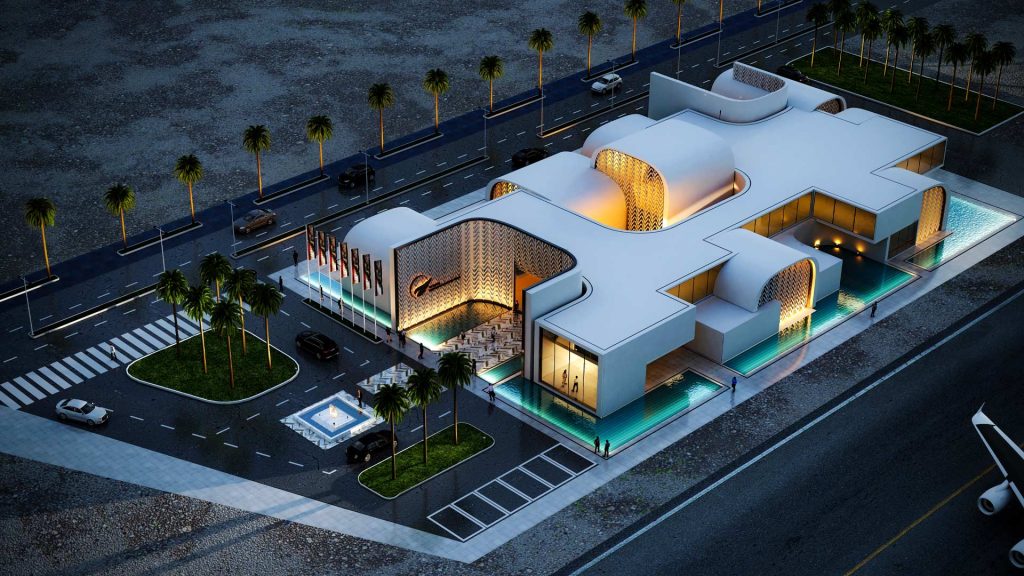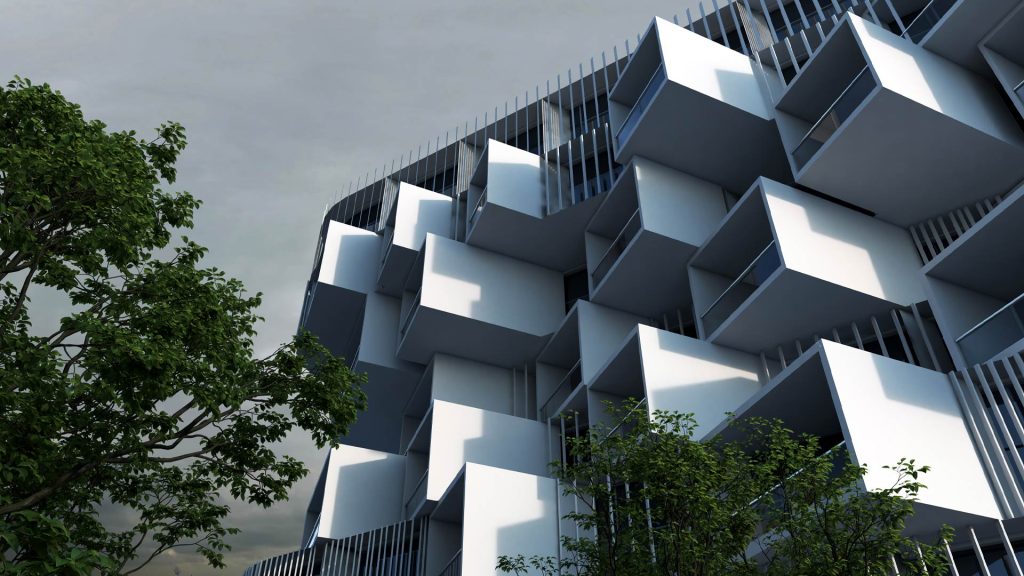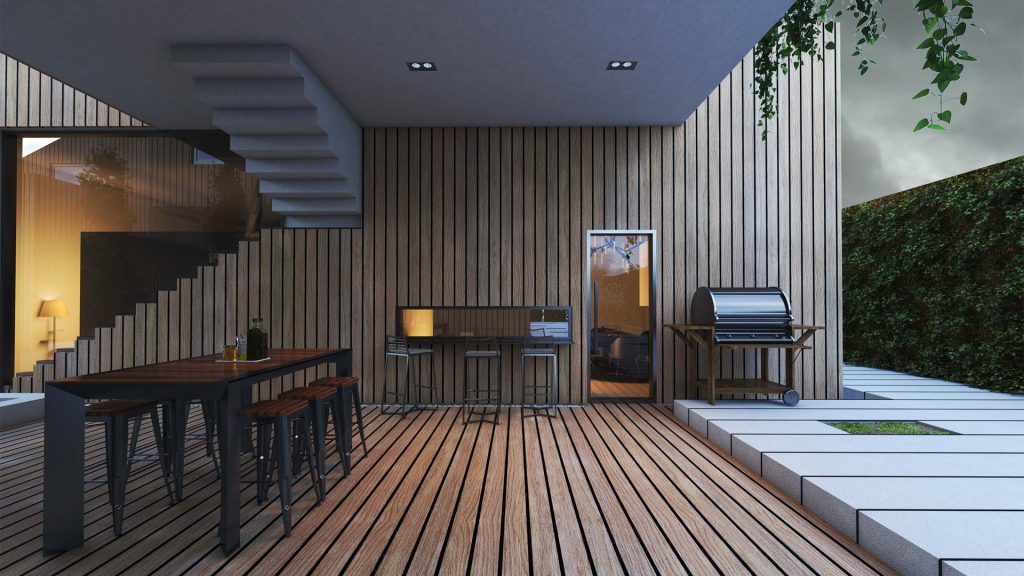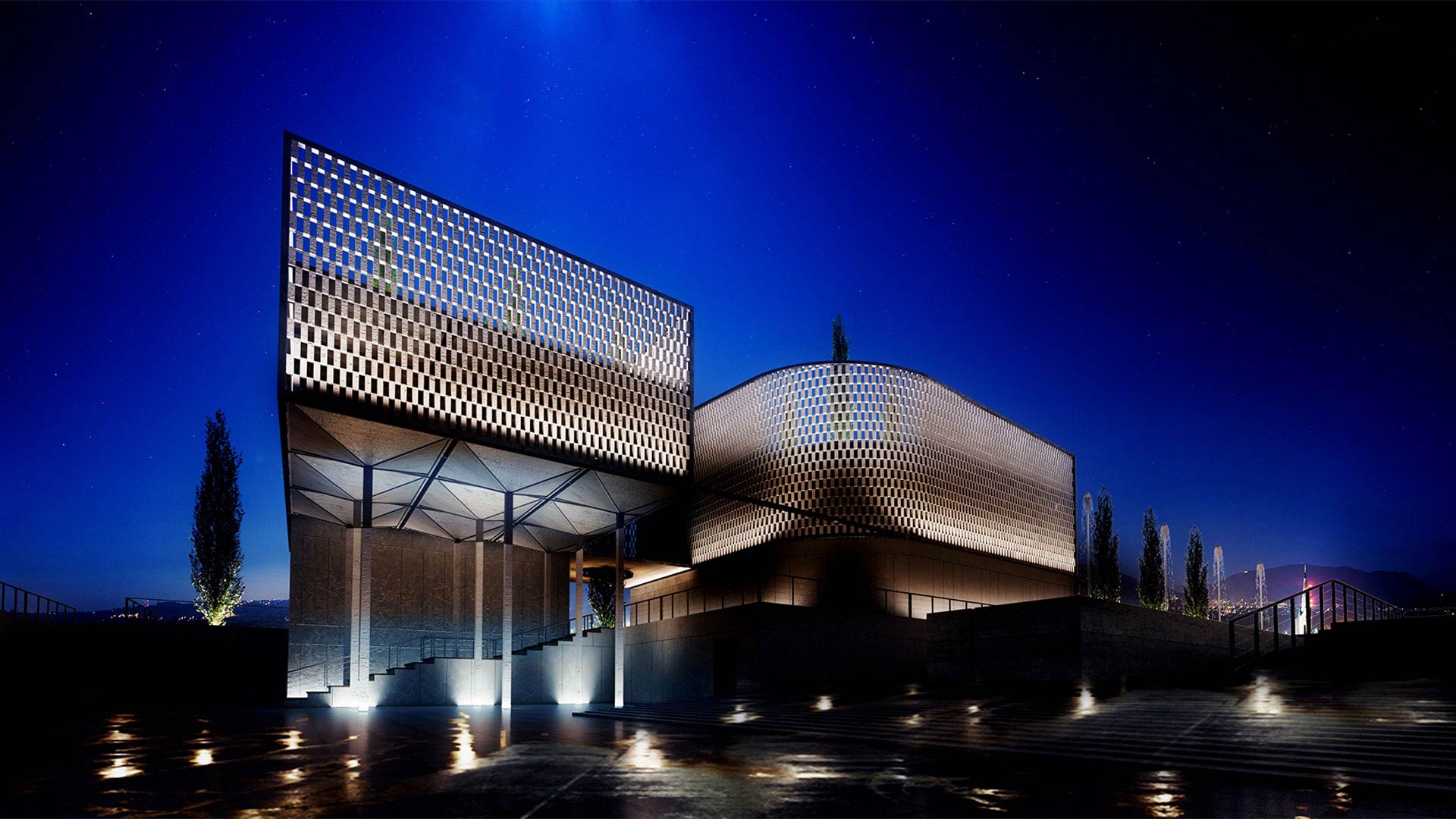
Atmospheric architecture not only reconsiders senses other than vision to play a role in designing architectural spaces, but also has redefined how vision should be dealt with. Whereas Kahn looked forward to create shapes with light, and defined clear and big zonings between light and shadow through the space, Zumthor creates place changing patterns of light and shadow which avoid any visionary defined experience and tend to more of a hypnotic effect, where vision is challenged and a more ambiguous sense of the place is evoked.
Arak Pray-House is based on a concept derived from another project, where the focus is on the mosque as an icon and as a place for sociability. By multiplying the common iconic central dome of the typical mosque, the design seeks to revive a simpler and humbler interpretation of the mosque, where creating an icon is not as important as to provide a space for social gatherings.
This interpretation of the mosque as presented in Arak pray-house reflects the simplicity of prophet Muhammad’s home in Medina, where the first mosque in history was established. The original type of mosque included an open courtyard surrounded with rooms supported by columns. This prototype is based on understanding the mosque as a multi-functional space for the Muslim community to congregate and socialize in after prayer. This type is seen as an extension of its immediate environment.
Ambiguity is an adjective many use in explaining atmosphere in architecture. More than that, it is common in everyday language to use atmosphere for explaining rather unexplainable feelings and affections. In cinema the term is used for movies of nonconventional spatial qualities. It is not surprising that we find such movies more related to theatre, especially in terms of stage design. Directors use stage like lighting and arranged stages to create more atmospheric effects. In a more general sense, it is common that people nowadays find the movies from early decades of the previous century very atmospheric and mysterious. A good reason for that is the use of early lighting techniques that were more of a theatrical nature and different from what one is used to experience in natural environment. Hitchcock mastered such techniques to create great atmospheres. It is interesting how he used architectural references to make his atmospheric ambiences even bolder. Using gothic architecture in the background, lighted up with theatrical spotlights that lack the shades and are defined by shadow and light only, is a good example of his atmosphere creating techniques. One could go further in following cross references between cinema, architecture and theater even back to Michelangelo and his Biblioteca Medicea Laurenziana known as Michelangelo’s library, where he designed a theater stage in the stairs hall, creating that nonfamiliar feeling of being in a mis-placed place, having one’s sense of the place played with and tangled.
‘I-Kal’ is MESH’s mega urban project in cooperation with Istanbul’s municipality and Sinpace Contracting Company. The project is to be built in the middle of European part of Istanbul and is a challenge in designing and coordinating architectural design with a condense urban context.
The project responds to urban needs by a DNA that is designed in between urban design and architectural design. The project was briefed as a high density one and the design team in cooperation with project’s developers decided to allocate the spaces provided under the ramps in central part, to the multiple commercial functions. The residential zone was developed into the height of the project and the entrance to the site was made to play the role of an interactive catalyst in relation with the center zone.
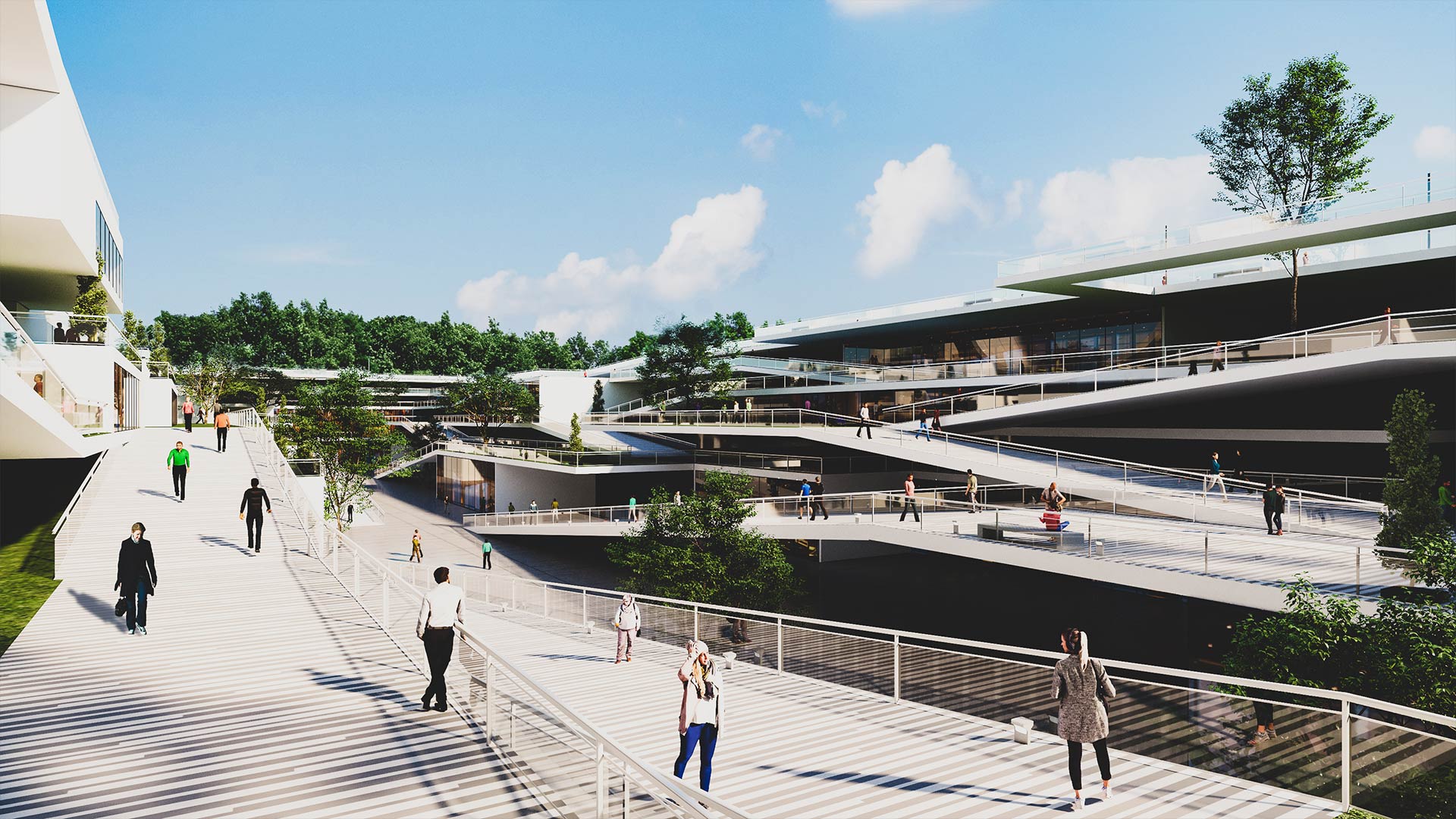
The atmosphere ‘I-Kal’ creates, is designed to act like a deep and relaxing breathe right in the middle of the dense and full of high-rises European heart of Istanbul.
Today the theory of atmosphere in architecture has many results on the design process for architects. Some are focused on detailing as their main tool for creating atmosphere, others aim for integration of open space and indoor space in their spatial designs, many are trying to blur the borders between architecture and landscape, others are effetely searching for unique spatial experiences.
The theory in practice, has influenced the design teams as well. Other than the real architecture produced and built, now there is a vast shift taking place in architectural presentation, from aiming for real 3d presentations to more atmospheric ambiences and new technologies beyond static images. Virtual reality is now becoming a common practice in architecture firms for giving the clients a better understanding of the space to be built.





